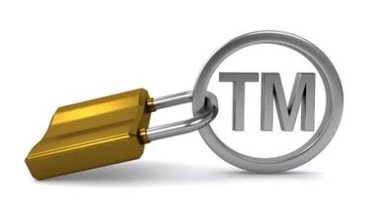Well Known Trademarks
Introduction
Hermes International recently filed a lawsuit against Crimzon Fashion Accessories Private Limited, alleging Trademark Infringement. Crimzon Fashion Accessories Private Limited specialises in leather goods, lifestyle accessories, home furnishings, jewellery, fragrances, and accessories for home. On December 23, 2022, the court ruled in favour of Hermes International, permanently restrained the defendant from using the mark, and ordered it to remove the infringing listings from its website. However, the court did not rule on the petition to deem the “H” mark to be a “well-known mark.” However, the Delhi High Court recently declared that the stylized “H” mark of French luxury brand Hermes International qualifies as a “well-known trademark” under the terms of section 2(1)(zg) of the Trademark Act, 1999 (hereinafter, the act). The questions currently are: what is a “well-known trademark,” what section permits a mark to be recognised as a “well-known trademark,” and what is the impact if any mark is certified as a “well-known trademark?”[i]
Well-Known Trademark
As the term implies, well-known marks are those that are popular or well-liked. The act defines a well-known trademark in Section 2(z)(g). It states that “a well-known trade mark, in relation to any goods or services, means a mark which has become so to the substantial segment of the public which uses such goods or receives such services that the use of such mark in relation to other goods or services would be likely to be taken as indicating a connection in the course of trade or rendering of services between those goods or services and a person using the mark in relation to the first-mentioned goods or services.”[ii]
[Image Sources : Shutterstock]
In short, the section merely states that some trademarks have become so well-known to the general public that if one takes the name of a well-known trademark, one will be able to determine what the mark is used for. For example, if someone mentions the well-known trademark Bisleri, one immediately thinks of bottled mineral water.
As mentioned earlier, well-known trademarks are protected specifically under the act, and Section 11(2) makes it clear that “even if a subsequent mark is deceptively similar to the prior one but for a different good or service, if the prior mark is well-known, the subsequent mark shall not be registered because the use of the subsequent mark without due cause would take unfair advantage of or be detrimental to the distinctive character or repute of the well-known mark.”[iii]
Prior to the introduction of the Trade Mark Rules 2017, well-known trademarks were decided upon by the Indian Courts and Tribunals, and the Trademark Registry had compiled a list of such well-known marks based on judicial pronouncements. For instance, Pepsi has been registered as a well-known trademark of Pepsico Inc., making it the only company that is permitted to register the term Pepsi for any type of goods or services. Even if the service is unrelated to the beverage business, only Pepsico Inc. is authorised to register Pepsi as a trademark for its product.
But now that the Trademarks Rules 2017 have been implemented, trademark owners can request “well-known status.”[iv] In general, the elements that the Registrar must consider, among other things, to determine a well-known trademark are broken down in Sections 11(6) to 11(9) of the act. The Registrar will consider a number of factors when determining whether a mark is well-known, including its geographic reach, the amount of time the mark has been used, and knowledge/recognition among the relevant segment of the public.
In Tata Sons Ltd. vs. Manoj Dodia,[v] while awarding relief, the Court established a 10-factor test to decide whether or not a trademark may be deemed well-known, which is as follows:
“The extent of knowledge of the mark vis-à-vis the relevant public segment (i); Duration of use (ii); Extend of product and services to which the mark is being used (iii); Method, frequency and duration of advertising and promotion of the mark (iv); Geographical extent of trading area where the mark is being used (v); Registration of the mark (vi); Volume of goods and services being sold under the mark (vii); Nature and extent of use of same or similar marks by other parties (viii); Extent to which rights claimed in the mark have been successfully enforced (ix); Actual number of consumers consuming goods or availing services under the brand (x).”
Significance
Well-known trademarks have their goodwill and reputation protected across the nation and across categories of goods and services, in contrast to other trademarks, which are restricted to their goodwill and reputation in a certain geographical region and a specific range of products.[vi]
A well-known trademark is valuable because it gives significant commercial value to its owners. A trademark is infringed upon when it is registered and used without permission. Because of the unauthorised use of such a mark, consumers are confused about the quality of the items, which affects the brand’s reputation. Unauthorized trademark imitation is illegal and punishable. For example, it is a trademark infringement case if a car manufacturer uses a well-known trademark for which the company is not the original owner.
Well-known trademarks provide nationwide protection for all types of goods and services, whereas trademarks only protect a company’s goodwill in a certain geographic area or group of items. Hence, despite the fact that Rolex only makes watches, the court in the case Rolex Sa v. Alex Jewellery Pvt Ltd & Ors,[vii] issued an injunction against it when counterfeit jewellery was sold under the name Rolex. This is the extra protection that a brand obtains after being named Popular.
Conclusion
A well-known trademark is an intellectual asset for a firm, providing it with several benefits, with no comparable marks permitted for any goods or services. Now, that the Court has declared the international brand Hermes’s “H” mark to be a well-known trademark, the mark will enjoy the protection of goodwill and reputation across the country and across categories of goods and services, and no person or organisation can register the “H” mark as their own, even for some other business. However, registrar must be cautious to give a mark a status of well-known trademark because once a trademark is designated as well-known, no one else is permitted to use a mark that is even remotely comparable to it.
Author: Arjim Jain, A Student at National Law University, Odisha, in case of any queries please contact/write back to us at support@ipandlegalfilings.com or IP & Legal Filing.
[i] Hermes International & Anr. V. Crimzon Fashion Accessories Private Limited (2023) LiveLaw (Del) 148.
[ii] The Trademarks Act, 1999, Section 2 (1) (zg).
[iii] Ibid., Section 11(2).
[iv] Trade Mark Rules, 2017, Rule 124.
[v] CS (OS) No. 264/2008.
[vi] https://www.ipandlegalfilings.com/all-you-need-to-know-about-well-known-trademarks/?utm_campaign=LinkedIn-integration&utm_medium=syndication&utm_source=Mondaq.
[vii] IA.No.279/2008 in CS (OS) 41/2008.



